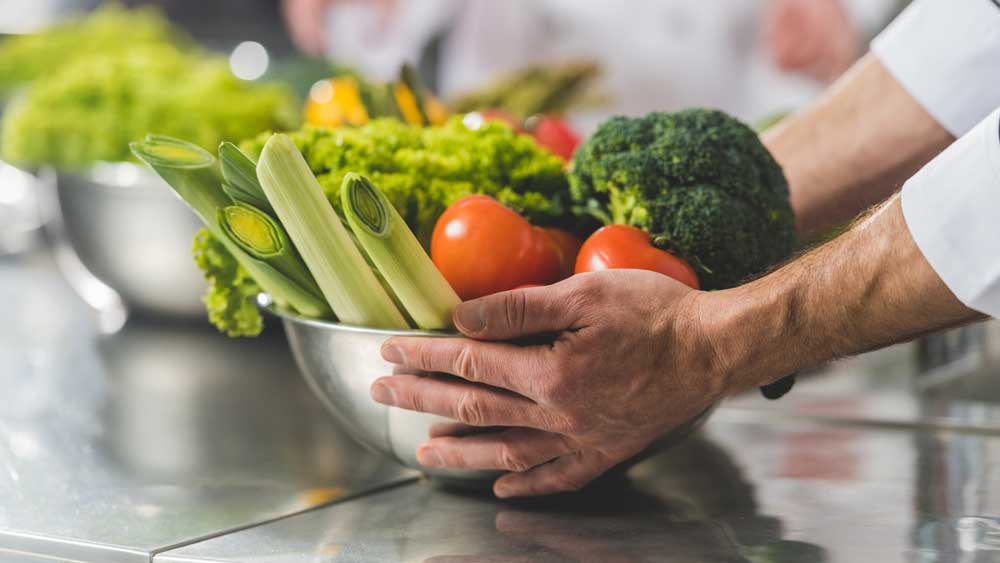Are you new to eating with food allergies? Not only do you have to adjust how you eat at home, but eating out can become more complicated. There are many well-meaning restaurants that don’t always do well with allergy-friendly food options. So what do you do when you want to eat out without being contaminated? Here are some tips for eating out with food allergies to help you out.
Tips for Eating Out with Food Allergies
These tips are meant to help you safely eat out with food allergies. However, it is important to follow what you are comfortable with and what you know will be safe for you. If you are concerned about eating somewhere, it is ok to choose a different location.

Research before you go
Many restaurants have online allergy menus that will help you to see what potential allergens are in food. These allergy menus may not be easily found on the website. Take some time to google the name of the restaurant with the term allergy menu. Many times this will give you a menu that will help you to build your order before you go. Taking time to research before you visit a restaurant can equip you to pick the safest possible meal.
*Pro Tip - Please don’t assume that these online menus are the final answer when it comes to allergy-friendly menu items. Some menu items or ingredients can change without an update to the website or based on a specific location’s choices. Sometimes franchises will have a variation of a recipe.

Ask for an allergy-friendly menu
When you arrive at a restaurant, ask for an allergy-friendly menu. Some locations will have food restrictions within their menu. Others will offer you a stand-alone allergy menu. These menus will typically focus on main allergens. The allergens most commonly covered are nut allergies, gluten allergies, and dairy allergies. However, some menus will include more food allergies and it will depend on the location you are visiting.
*Pro Tip - When looking at an allergy-friendly menu make sure to look at items like sauces, toppings, and seasonings. There are many people who do not realize that certain toppings, sauces, or seasonings can contain these allergens.

Ask about cross-contamination
One area many people overlook when planning to eat out with food allergies is the issue of cross-contamination. While a restaurant may promise to have gluten-free items, it is important to verify their cooking and plating practices. For those without food allergies, it can be easily unknowingly cross-contaminate food in the process from cooking to table. If your food server is unsure, ask them to speak with the cook or chef in the back to verify food safety.
*Pro Tip - Ask about other items that are cooked on the same surface or in the same fryer. Items like gluten or dairy might be made in the same fryer. People who don’t have food allergies may not know to advise you of these potential cross-contaminates.

Don’t be afraid to leave
Some locations are not food allergy-friendly safe. If you are concerned that a location is going to put your safety in jeopardy, don’t be afraid to leave. You are a paying customer and have the right to find a place to better accommodate your needs. You are not being rude to the restaurant or the staff there by making the healthiest decision for yourself. Don’t be afraid to leave and put your health first.
*Pro Tip - Be honest with the people you are dining with. Many will understand if your concern is a valid safety concern. Don’t let guilt put you in a position where you will consume something that is not safe for your health.

Double-check your food
When you do get your food, make sure to double-check your items to be sure they are made the way you asked for them to be made. Take some time to talk to the person giving you your meal. It is completely appropriate to confirm that all safety protocols were followed in preparing your meal. Ask any questions you need to ask to be sure you have the right food that honors your allergies. If your food wasn’t safely prepared, it is ok to send it back.
*Pro Tip - If you have concerns about the way food was prepared, make sure to send it back. A quality restaurant staff should be willing to do what needs to be done to assure that your food is as safe as possible for you.
Keep it simple
When eating out, it can be tempting to try all of the best that restaurants have to offer. With menus filled with pictures of delicious foods, you may be tempted to try everything you used to eat if it claims to be allergy-friendly. When you start eating out with food allergies you want to eat simple items that are less likely to get contaminated. This may mean opting for vegetables, meat, or other simple items that are prepared with minimal sauces and potential allergens. If you are concerned with sauces or seasonings, it is also ok to bring some of your favorite sauces or seasonings with you.
*Pro Tip - When choosing your menu item, opt for items like grilled meats that are less likely to be cooked with common contaminants. For items like steak, remember to ask if they are cooked in butter if you have a dairy allergy. Many places will use butter for their steak cooking process. 
Be prepared to treat exposure
Even the best restaurants can accidentally cross-contaminate foods. If you have a food allergy that can be treated with items like Benadryl or an EpiPen®, make sure you have those with you before ordering. You do not want to find yourself in a situation where you encounter an allergen and don’t have a way to treat it. It can also help to know what the symptoms of exposure are so that you know when to treat it. Make sure to talk to your doctor about the symptoms of exposure on how you should treat them before you begin eating out.
Looking for a delicious recipe to try at home?
Here’s one for an Elote Grilled Cheese Sandwich!

